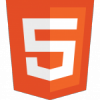Search the Community
Showing results for tags 'native'.
-
In the ever-evolving landscape of mobile gaming, monetization strategies play a pivotal role in the success and sustainability of games. As technology advances and player preferences shift, game developers continually adapt their approaches to generate revenue while providing enjoyable gaming experiences. In this article, we delve into the top mobile game monetization trends shaping the industry in 2024. 1. In-App Purchases (IAPs) Reinvented: In 2024, the approach to in-app purchases has undergone a transformation. Developers are increasingly focusing on offering value-driven microtransactions rather than simply gating progress behind paywalls. Cosmetic items, such as skins, outfits, and emotes, dominate the IAP landscape, providing players with opportunities for personalization without impacting gameplay balance. Moreover, subscription-based models are gaining traction, granting players access to exclusive content, bonuses, and ad-free experiences for a recurring fee. 2. Immersive Advertising: While ads have been a staple of free-to-play mobile games for years, their integration has become more sophisticated in 2024. Developers are adopting non-intrusive ad placements, such as rewarded video ads and native advertising, to strike a balance between revenue generation and player engagement. These ads offer tangible benefits to players, such as in-game currency, extra lives, or power-ups, incentivizing their participation while providing an additional revenue stream for developers. 3. Live Events and Limited-Time Offers: Dynamic live events and time-limited offers have emerged as effective monetization tools in 2024. These events create a sense of urgency and exclusivity, encouraging players to make purchases or engage with the game within a specified timeframe. From seasonal festivities to themed challenges, developers leverage these events to introduce new content, special rewards, and promotional bundles, driving player engagement and monetization concurrently. 4. Personalized Monetization Strategies: In the era of big data and artificial intelligence, personalization has become paramount in mobile game monetization. Developers harness player data to tailor monetization strategies based on individual preferences, behaviors, and spending habits. By offering targeted promotions, discounts, and recommendations, developers can enhance player satisfaction and maximize revenue potential. Additionally, personalized pricing models, such as dynamic pricing and variable discounts, optimize monetization by aligning costs with perceived value for each player. 5. Blockchain Integration and NFTs: In 2024, the integration of blockchain technology and non-fungible tokens (NFTs) has begun to reshape mobile game monetization. NFTs enable players to own unique, tradable in-game assets, ranging from characters and items to virtual real estate. Developers leverage blockchain to establish secure asset ownership, facilitate peer-to-peer trading, and create scarcity-driven economies within games. While still in its nascent stages, the adoption of blockchain and NFTs holds promise for innovative monetization opportunities and player-driven economies in mobile gaming. Conclusion: The mobile gaming industry is witnessing a paradigm shift in monetization strategies as developers adapt to evolving player expectations and technological advancements. In 2024, the focus is on providing value-driven monetization options, embracing personalization, and exploring emerging technologies like blockchain and NFTs. By staying attuned to these trends and continuously iterating on monetization models, developers can foster sustainable revenue streams while delivering captivating gaming experiences to players worldwide.
-
- game monetization
- native
-
(and 1 more)
Tagged with:
-
Hello fellas! Having web games is amazing, but we all know monetisation and marketing is a lot easier with apps. What is currently the best way to port a web game into native apps? Is there any wrapper out there working well without having a big impact in performance? The one I've seen is cocoon js, but I've not yet been able to make it work. Many thanks in advance!
-
A month ago I discovered Phaser JS, and a few other JS libraries, and was amazed at what people can do in JS nowadays. I know there are several advantages to making Casual HTML5 games, namely (1) You can target many platforms using wrapping kits (like CocoonJS) (2) You are working in a platform neutral environment instead of something proprietary like XCode/ObjC/Swift (3) You control your game, and don't need approval from someone like Apple (4) There are markets where you can license your games (5) You can use whatever development environment you want, like Linux (6) The simplicity of coding lets you focus on the game itself Yet, even with all these advantages, there are some compelling reasons to go with Native - assuming you want to earn money: (1) If you want to make money, you have to target mobile, so why not just focus on that (2) If you will focus on mobile, the majority of the market can be reached by just targeting iOS (3) Any good looking mobile game will run better/faster/stable as a native app (4) Something like 80% of mobile users prefer native apps over hybrid (5) Your compiled code is harder to steal than JavaScript I ask this because I've seen some really great HTML5 games, and I wonder if the authors could be topping the iOS game charts, making them boatloads of money. I have read some people make a prototype in C2, then rewrite it in Phaser - why not prototype in Phaser and rewrite it in Swift/ObjC? It seems like with HTML5, you can hit a lot of markets, but are not able to have a monster hit on your hands. An example, I was playing one of Okinjin's games, and it was really great, then I accidentally "slid" Safari off the side of the screen, then I tried to "slide" it back. I ended up with several screens sliding around, and never found the game again. This was not Okijins fault, it was the nature of playing a game in a web-browser on a mobile device. I was showing a friend the game at the time, and ended up having to close Safari and browse back to the Okijin site. If it had been a native app, it would not have done that. I still really like the HTML5 stuff, but if the goal is to make money (and for many it is not), it would seem easier to do on native mobile. On mobile, I know "discoverability" is a big problem, while HTML5 portals will actually push your game out to the masses for you. I've heard HTML games are easier to make viral because they can be shared with a hyperlink, but it would not seem that would be enough of a difference.
-
Maybe this is an old subject but nowdays I'm trying implementation of box2d/pixijs HTML5 game to mobile. Everything was working okay until android 6+ appeard. Crosswalk was solving most problems but i had new releases and cordova 8.0 , crosswalk, android 7.0 and pixi just give poor performance. Game runs smoothly on desktop, and ok on mobile browser, but Native (cordova) runs @21 fps. Has anyone facing same problems? Is there a easy solution to replace cordova with some other framework ? How do you pack pixijs to Native ? Thanks, 3ojan
-
- native android box2d
- native
-
(and 2 more)
Tagged with:
-
Hi everybody, i would like any info regarding tools that can package HTML5 web apps to native (preferably) and hybrid mobile apps (Android and iOS are the two platforms i would like to target). My main concern is to find which tools can render canvas (WebGL also would be great) contents on a native OpenGL stage, in order to get the best mobile performance. Now, from my research i found that only - Cocoon.io (formerly known as CocoonJS) can build and package a HTML5 Canvas (and WebGL) app to a native mobile (Both Android and iOS). If you want to target iOS only you can also use - Ejecta I also realize that, - PhoneGap, - The Crosswalk Project and - Apache Cordova(?) use WebView, which means that they package your app with a browser window, so performance wise, they are pretty similar with how your app looks when run in a mobile browser. Some other tools, for which i haven't figured out on how they handle canvas/webgl objects include : - Game Closure - The Electron framework - Intel XDK - Appcelerator So i would like any extra info, on other tools, or experiences using the aforementioned tools. Since i have never used any of it, i might have misundestood some things, so feel free to correct me, and expand the list if you will. It would be a nice reference for everyone. Thanks and have a good one! p.s. Literally any insight on the process of porting a web app to mobile is useful, especially anything about canvas performance on mobile.
-
I'm using GameMaker: Studio, and currently facing a problem with sound in Mobile Native HTML5 browser, Sound is Working in PC browsers, like FireFox, EDGE(Internet Explorer), but not working in Mobile Native Browsers, i have tested it in my Android and Windows Phone, Any help would be really Appreciated,
-
Is there any option how export phaser HTML5 game into android platform ? Like electron, it will package JS files with "browser" into jar, and it can be published in the google play store ? I know people can just run in their mobile browser but this can not be published in the google play store. Thank you
-
Hi all, I've been working on a JS->C compiler prototype for my thesis to help making more advanced JS games mainly for iOS without having to compromise performance due to JIT compilers not being allowed. However, to achieve really good performance this compiler has deviated a little bit from standard code semantics so I've made a small survey that i'd hope as many of you as possible would fill in so i'll have an idea of how useful it'd be in practice. If you don't understand some parts of the questions, don't worry as those are usually error prone situations and just answer the best you can. (This form is now closed) https://docs.google.com/forms/d/10dcIUkarUHuCVMFJstNtSd6hdm-QtQmlxYMnb_bfJFo/viewform Gonna put a FAQ in the next comment (or this one) if needed. -------------------------------------------------------------------------------------------------- Edit: 2015-06-13 , turned off the submission form as i've submitted my thesis.
- 5 replies
-
- javascript
- native
-
(and 3 more)
Tagged with:
-
What do you recommend in order to turn an html5 game into a desktop app? I know about NW.js(formerly known as Node-Webkit) which is very popular, and about Electron(formerly known as Atom Shell). Any experiences using either of the two? Any other alternatives to recommend?
-
Hi there, I have been wondering for some time now, if it is a possibility to convert my current and/or future HTML5 games to native desktop applications. I have seen that there is some chrome/webkit frames as well as some other frameworks like Adobe Air. Which should I use, does anyone of you have any experience with this?
- 9 replies
-
- html5desktop
- native
-
(and 2 more)
Tagged with:
-
With iOS 8 using the new WKWebview and greatly improving app performance it caused some controversy about the fate of non-broswer wrappers. I am wondering if that caused html5 game devs to switch wrappers. If you can vote on the poll which wrapper do you currently use and why?
-
Hi, Does anyone have a comprehensive list of tools that can be used to deploy HTML5 apps as a native app for mobile? I am currently aware of the following: * Marmalade Web * Intel XDK / Crosswalk Thanks Mat
-
Hi everybody ! I am searching a native performance wrapper for canvas based games on Android since long time. For the time being I only knew 3 ways (solutions allowing to use an existing code without having to change anything): CocoonJs, Ejecta-X et Intel XDK. The better being CocoonJs. But because I don't like: - Being dependent of a platform: the day they change the version, if this version introduce some bugs in your games, you cannot re-build anything until they fixed it. - Being unable to create custom native plugins. - Being unable to remove the splash screen. Last week, as I was searching for nth time an alternative, I fell on Crosswalk (https://crosswalk-project.org/). I think I already found this long time ago but I was not really impressed by the project, was afraid by the installation steps and was not too much into Android. But let's come to the point: as far as I have been able to test, performances are awesome! I tested only one game so far (a canvas 2d only) and here is how it's performing: + Galaxy S2: same speed as CocoonJs with a faster boot. + According to a friend who tested for me on a "Nexus 7 KitKat", an "Xperia 4.0.4" and a "Galaxy S3 4.1.2" : faster than the CocoonJs version - Sound effects seems to be very low on my S2, I forgot to ask to my friend for his devices That's it... would be awesome if somebody else could try to confirm or refute my conclusions. Installation is still a little pain in the a**. The biggest problem I got was to get the "adb" command line to work, but that's not really related to crosswalk, just an Android SDK stuff. But if you are like me an "Ejecta on iOS and CocoonJs on Android" guy, I think it's worth to try!
-
hi i made a game with phaser last version it works fine in web but in mobile devices its become very slow the game is about cars and racing something like that i package it to APK with crosswalk i tried coconjs it is not working only black screen show up and then nothing please help me to solve my problem
-
I'm new to this world, although I have already some projects using Flash. How can I make a Phaser game to run as a native app? I'm looking a lot of mobile frameworks, as I already love Flixel, I want to try Phaser. Thanks!
-
Hi, here are some screenshots of my latest game. It's called Yummy Plate and it is a simple one-button casual arcade game. PLAY WEB VERSION Some technical notes (since it's a coder board) - I used the following libs: Pixi.JSTween.js (by sole)CocoonJS (for Android port) Have fun! Best, benny!
-
Hi all, after releasing my first CocoonJS port using Pixi called Yummy Plate, I thought I share some experience I made with it. The experience below is based on the following versions: - Pixi.js V1.2&1.3 - CocoonJS version 1.4.4. 1.) Setting Canvas To Fullscreen Mode You have to keep an eye on what renderer you use in PIXI. WebGL or Canvas. CanvasRenderer: Not a problem - simple use e.g. canvas.style.cssText="idtkscale:ScaleAspectFill;" to scale up your canvas in CocoonJS environment. WebGLRenderer: Make sure to place all game objects in a display container which is scaled up to window.innerWidth and window.innerHeight. Refer to this thread for more details. I choosed the CanvasRenderer using CocoonJS' screencanvas. This accelerates and optimizes the canvas operations anyway. Performance-wise it worked very well as far as I could test it. 2.) Touch input Current version of CocoonJS seems to have some problems with the way Pixi.js processes the touch events. For Yummy Plate it was not the big deal. However, the guys from Ludei are already working on the problem. Read this thread for more information. 3.) Bitmap Font Loader Yummy Plate uses bitmap fonts. Loading bitmap fonts requires XML parsing. Unfortunately, there is no XML parser available in the current CocoonJS version. What I did, was convertig the XML generated bitmap font file into JSON format and replaces the bitmap font loaded with the json loader. Apart from above's points - converting the project to a native (android) application was really advanced. Thanks to Ludei, I could also test some of their premium features, and so far I really have to say that I like the CocoonJS environment. Feel free to check out Yummy Plate by yourself if you have an android device: A nice rating is always welcome ;-) Best, benny!








